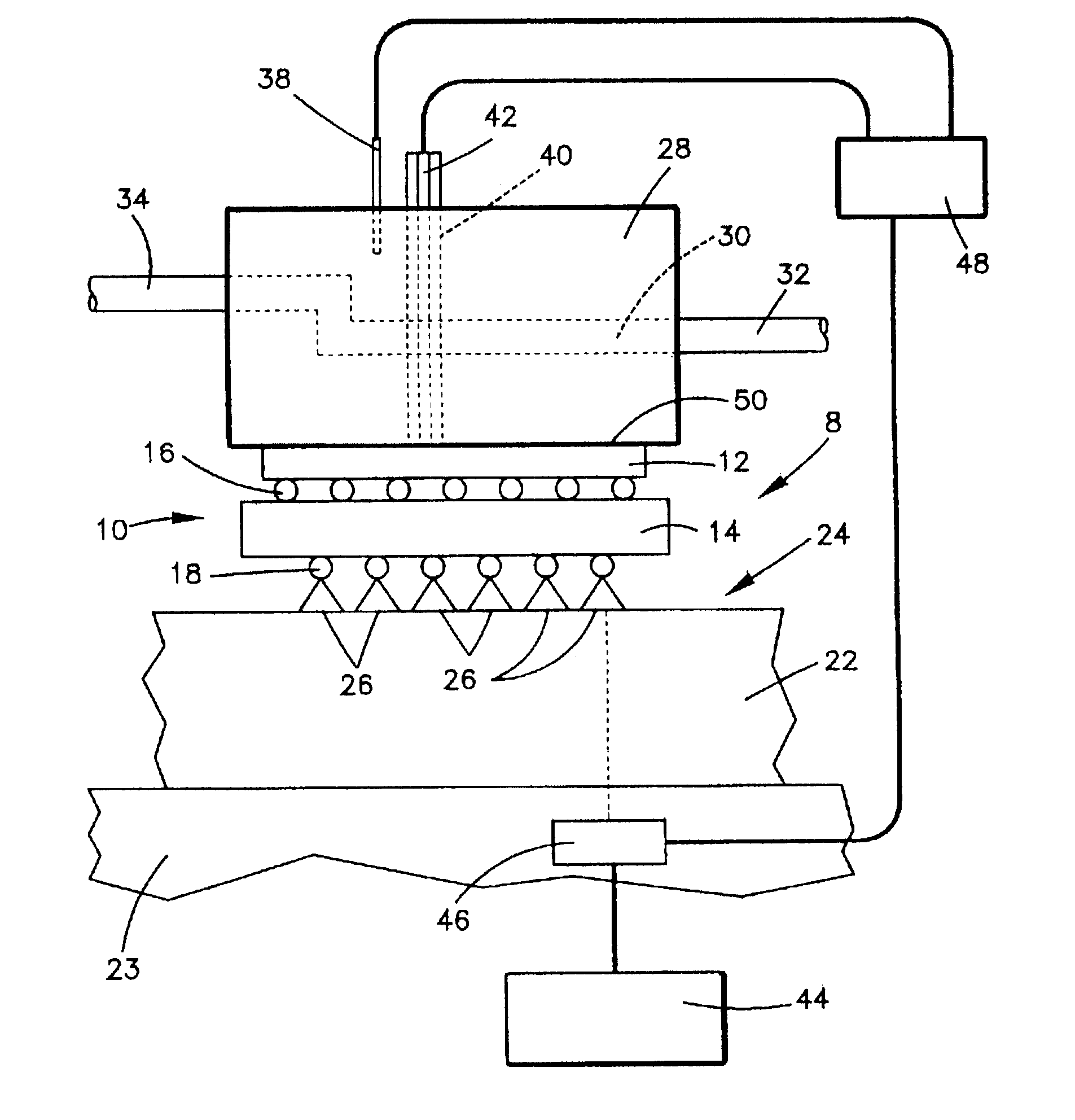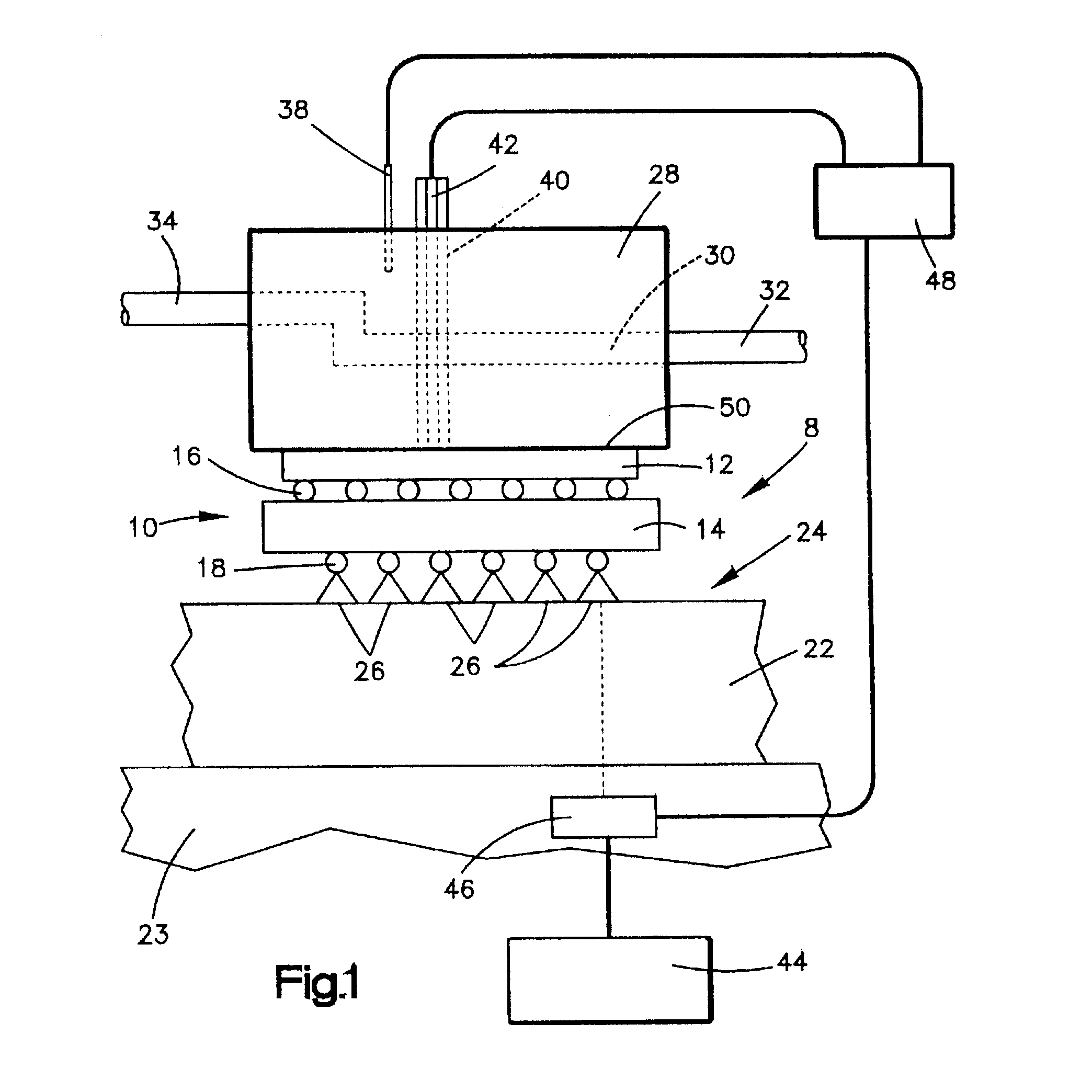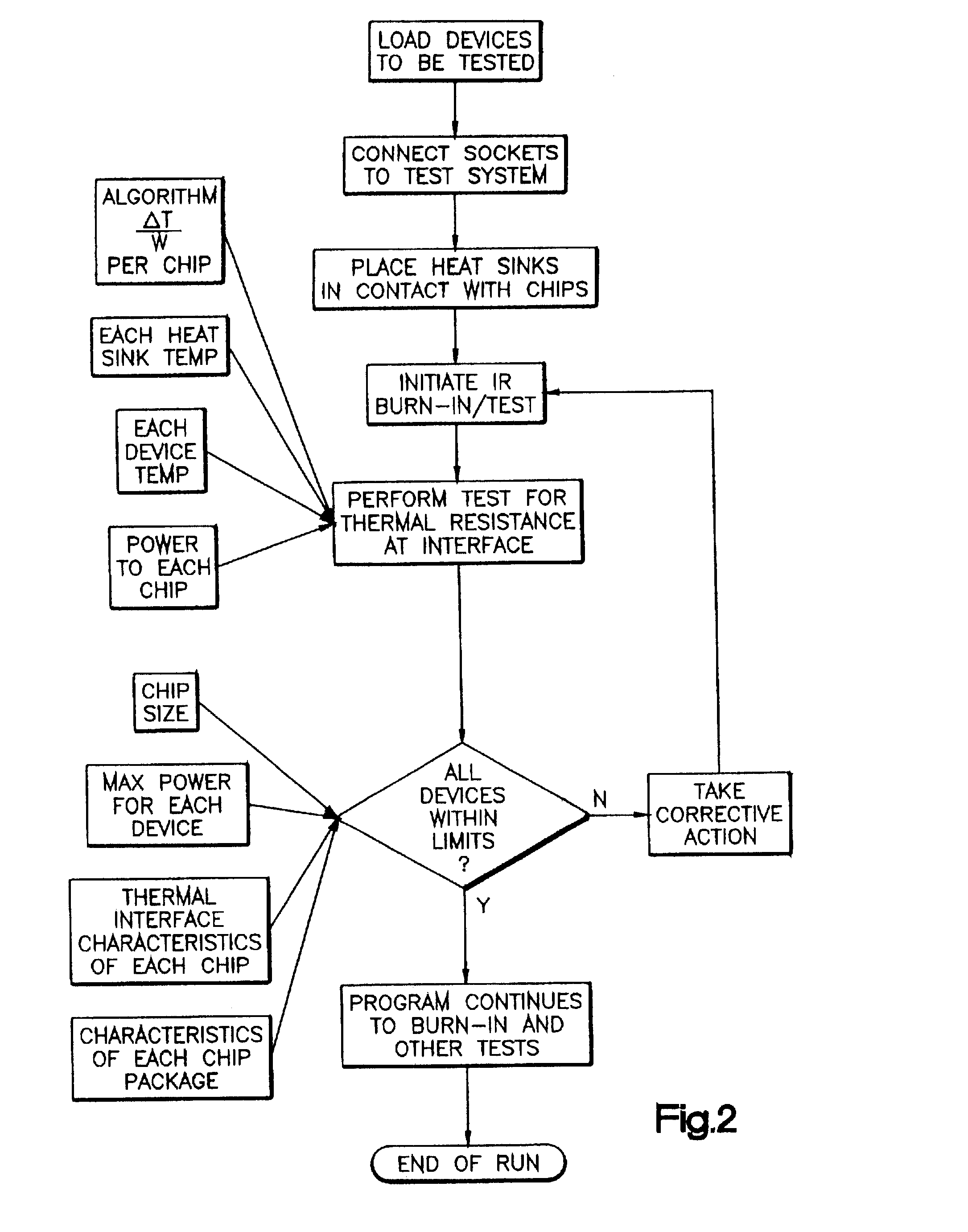Method of burning in an integrated circuit chip package
a technology of integrated circuits and chips, applied in the direction of electronic circuit testing, measurement devices, instruments, etc., can solve the problems of high power levels during burn, long burnin procedure, and relatively high voltage and temperatur
- Summary
- Abstract
- Description
- Claims
- Application Information
AI Technical Summary
Problems solved by technology
Method used
Image
Examples
Embodiment Construction
--measured chip temperature -87A.degree. C. heatsink temperature measured -27A.degree. C. measured power to this chip a{character pullout}" 80 watts Thus, thermal resistance at the interface can be calculated as follows: 87A.degree. C. minus 27A.degree. C. (I"T) divided by 80 watts (w) equals 60A.degree. C. divided by 80 watts equals 0.75A.degree. C. per watt (TR). ##EQU2##
This is greater than the calculated maximum allowable thermal resistance of 0.67 watts per degree centigrade and, thus, this chip should not be subjected to the burn-in procedure at 150 watts and 120A.degree. C. plus or minus 5A.degree. C. Example 2--measured chip temperature -67A.degree. C. heat sink temperature -27A.degree. C. power measured to this chip -72 watts The thermal resistance is then calculated as follows: 67A.degree. C. minus 27A.degree. C. (I"T) divided by 72 watts (w) equals 40A.degree. C. divided by 72 watts equals 0.55A.degree. C. per watt (TR) ##EQU3##
Since this value is less than the calculated...
PUM
 Login to View More
Login to View More Abstract
Description
Claims
Application Information
 Login to View More
Login to View More - R&D
- Intellectual Property
- Life Sciences
- Materials
- Tech Scout
- Unparalleled Data Quality
- Higher Quality Content
- 60% Fewer Hallucinations
Browse by: Latest US Patents, China's latest patents, Technical Efficacy Thesaurus, Application Domain, Technology Topic, Popular Technical Reports.
© 2025 PatSnap. All rights reserved.Legal|Privacy policy|Modern Slavery Act Transparency Statement|Sitemap|About US| Contact US: help@patsnap.com



